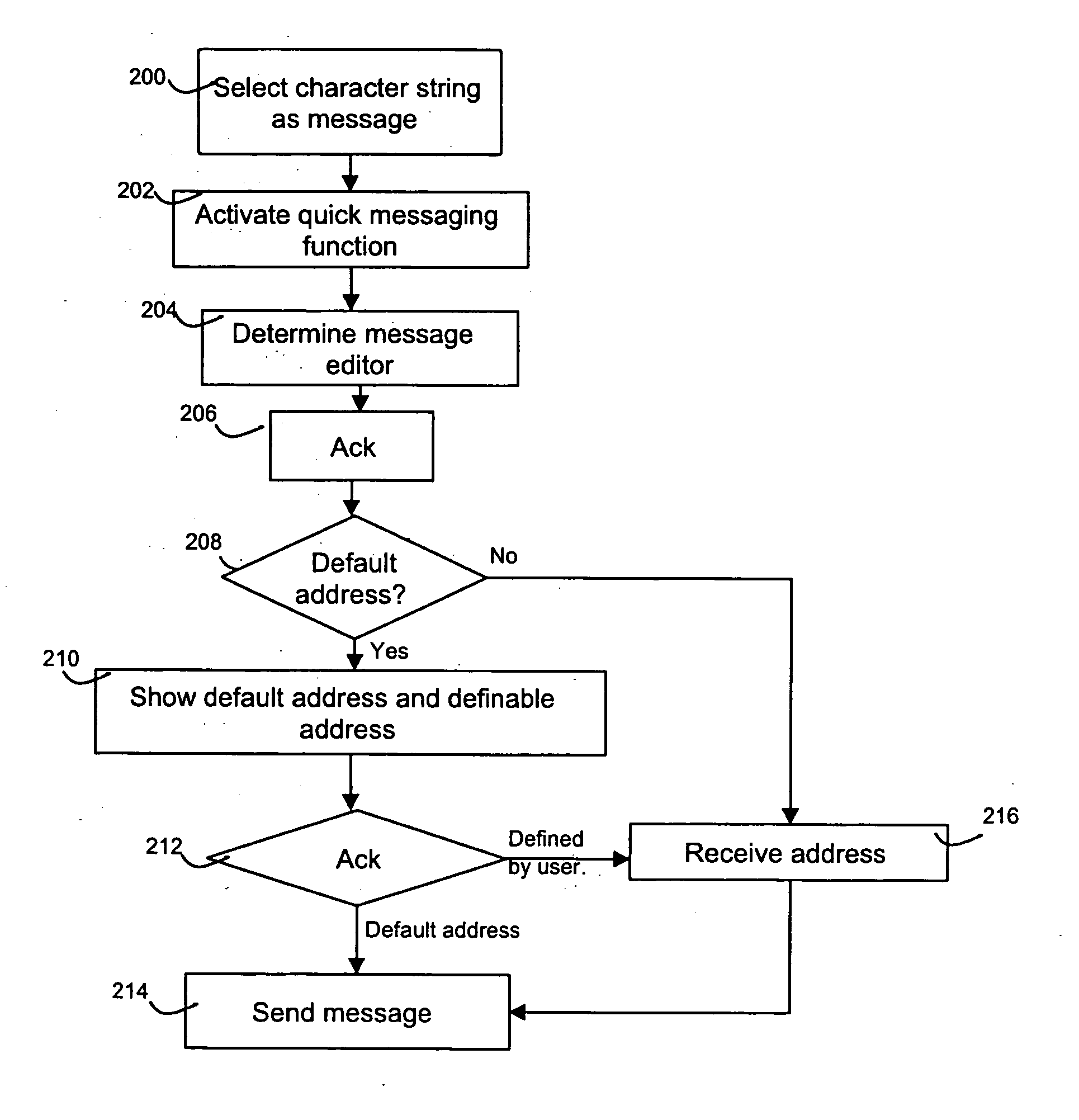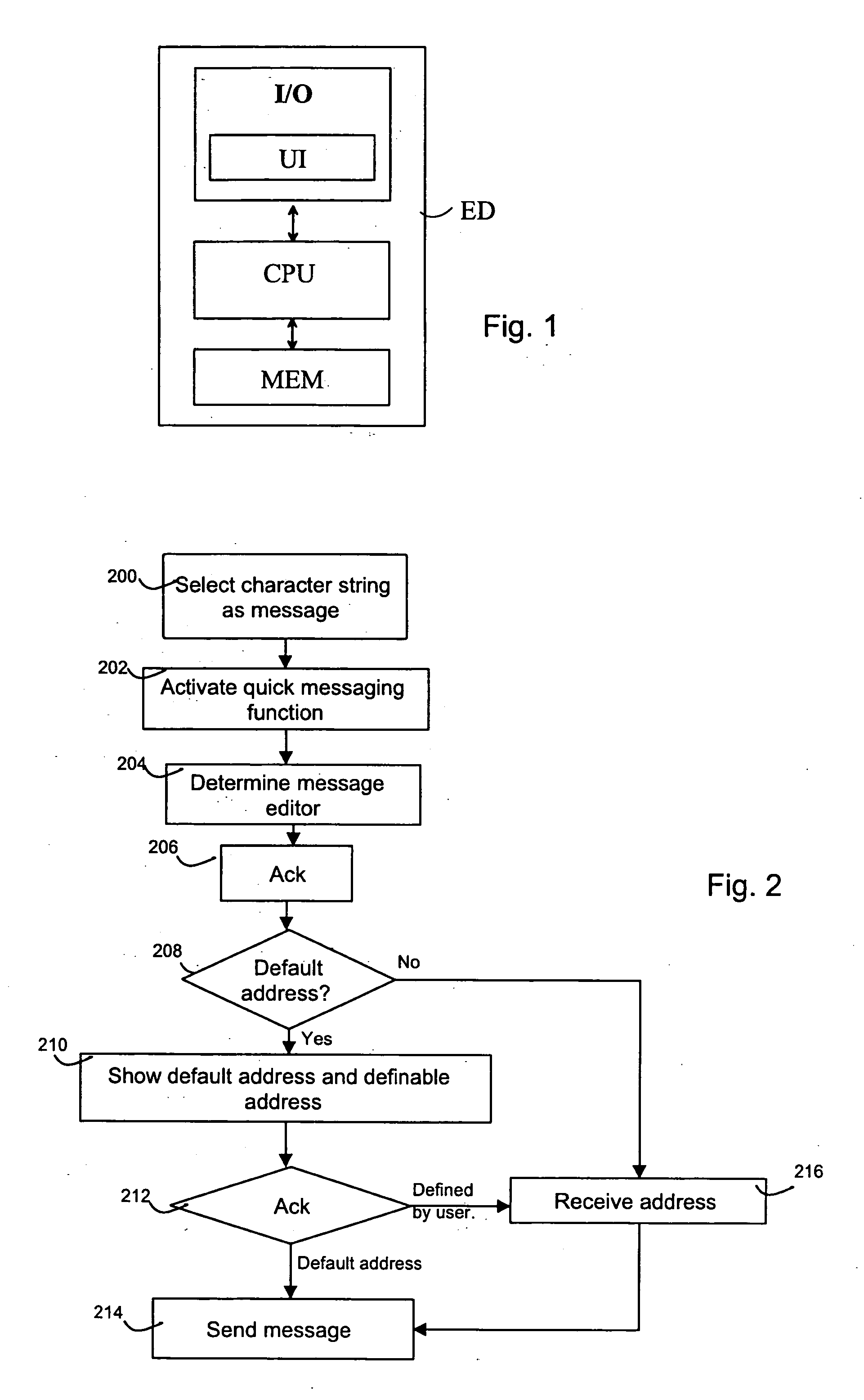Forming a message from information shown on display
- Summary
- Abstract
- Description
- Claims
- Application Information
AI Technical Summary
Benefits of technology
Problems solved by technology
Method used
Image
Examples
Embodiment Construction
[0020]FIG. 1 is a block diagram showing an electronic device (ED), which may be e.g. a wireless mobile station or a PDA device and to which the invention may be applied.
[0021] The electronic device (ED) comprises a central processing unit (CPU), a memory (MEM) and an I / O system (I / O). All the necessary information is stored in the memory (MEM) of the device. The memory (MEM) comprises a read-only memory part, which may consist e.g. of a RAM (Random Access Memory) and / or FLASH memory. Through the I / O system (I / O), the device communicates e.g. with other devices, a network and a user. A user interface (UI), which is a part of the I / O system (I / O), comprises an interface necessary for communicating with the user, such as a display, keypad, loud-speaker and / or a microphone. Information obtained from different components of the device is delivered to the central processing unit (CPU), which processes the received information in a desired manner.
[0022] The advantages of the invention be...
PUM
 Login to View More
Login to View More Abstract
Description
Claims
Application Information
 Login to View More
Login to View More - R&D
- Intellectual Property
- Life Sciences
- Materials
- Tech Scout
- Unparalleled Data Quality
- Higher Quality Content
- 60% Fewer Hallucinations
Browse by: Latest US Patents, China's latest patents, Technical Efficacy Thesaurus, Application Domain, Technology Topic, Popular Technical Reports.
© 2025 PatSnap. All rights reserved.Legal|Privacy policy|Modern Slavery Act Transparency Statement|Sitemap|About US| Contact US: help@patsnap.com


